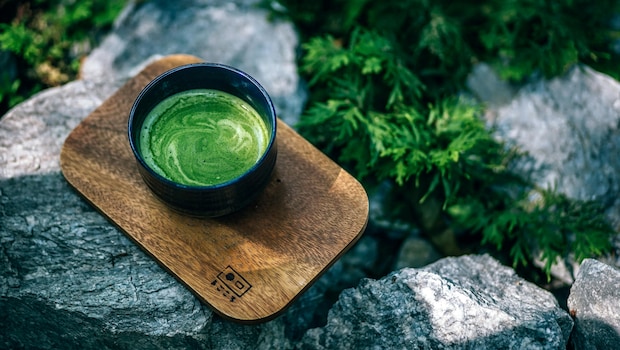If you have ever tried matcha and found it a little too grassy or bitter, you are not alone. Chances are, it was not made properly. But do not give up just yet. When brewed the right way, matcha is smooth, earthy, and surprisingly comforting. It is just an Instagram-worthy green latte trend; it is, in fact, a centuries-old Japanese tea tradition in a cup. And it is extremely healthy too. So how do you make matcha taste like a treat instead of a chore? Roll up your sleeves. We are going to walk you through how to make matcha the right way - no fancy tea ceremony required. The secret? It all comes down to how you brew it.
What Is Matcha? Is It Same As Green Tea?
Matcha is a finely ground powder made from specially grown green tea leaves. Unlike regular green tea, matcha plants are shade-grown before harvest, which boosts chlorophyll levels and gives matcha its signature vibrant green colour and rich, grassy flavour.
What makes matcha unique is that you are not just steeping leaves. You are consuming the whole ground leaf. That is why both the quality of the powder and how you prepare it matter. One wrong move, and you could end up drinking clumps of bitter green grass.
Also Read: Why Matcha Is The Superfood Everyone Is Talking About

Photo Credit: Pexels
What You Will Need To Make Matcha?
1. Choose The Right Matcha Powder:
There are two main types of matcha: ceremonial grade and culinary grade.
- Ceremonial grade matcha is the highest quality, traditionally used in Japanese tea ceremonies. It is made from the youngest, most tender leaves, which are carefully hand-picked, de-stemmed, and stone-ground into a silky powder. The result is a bright green colour with a naturally sweet, delicate, and smooth flavour. It is best enjoyed on its own, whisked simply with hot water. Because of the labour-intensive process, ceremonial grade matcha tends to be more expensive.
- Culinary grade matcha, on the other hand, is designed for recipes, like baking, lattes, and smoothies. It is made from slightly older leaves, often including stems and veins. This produces a duller colour, from yellow-green to olive, and a more robust, slightly bitter taste that stands up well to other ingredients like sugar or milk. It is also more affordable, making it a practical choice for everyday use.
2. Use The Right Water Temperature:
Water temperature makes a huge difference in taste. Boiling water can scorch the matcha and make it bitter, while room-temperature water leaves it flat and flavourless. The sweet spot is between 70-80 degree Celsius. Boil your water, then let it sit for a minute or two before adding it to your matcha.
3. Get The Right Tools:
A few simple tools will elevate your matcha game:
- A bamboo whisk (chasen) to create that signature frothy top and enhance the earthy flavour.
- A fine mesh sifter to break up clumps for a smooth texture.
- A wide-mouth mug or bowl to allow space for proper whisking and aeration.
Matcha-Making Ritual: Step-By-Step Guide:
Step 1: Sift 1-2 teaspoons of matcha into your bowl. Matcha is clingy and clumpy. So, sifting helps prevent lumps in your drink.
Step 2: Add about 2 tablespoons of hot water and mix into a paste. This step helps dissolve the powder evenly.
Step 3: Using your bamboo whisk, whisk vigorously in a zigzag motion (like an M or W). This creates a frothy, bubbly texture that brings out the aroma and flavour.
Step 4: Add 120-180 ml of hot water and whisk gently to blend. If making a matcha latte, top it off with steamed milk and sweeten with honey or maple syrup.
That's it! You have just made the perfect cup of matcha to sip and savour.
Also Read: Watch: Sanya Malhotra's Matcha Recipe Is What Your Morning Needs Right Now

Photo Credit: Pexels
Pro Tip For Matcha Mastery:
1. Store it smart:
Keep your matcha sealed in an airtight container in the fridge. Light, heat, and oxygen are its biggest enemies.
2. Use filtered water:
It is essential for a cleaner, crisper taste.
3. Experiment:
Try iced matcha, matcha lattes, or even matcha lemonade once you master the basics.
In Conclusion:
Matcha is part art, part science, and a whole lot of zen. Keep experimenting to find the ritual that fits your taste. Whether you are a morning purist or a latte lover, one thing's for sure - good matcha deserves a good moment.
About Somdatta SahaExplorer- this is what Somdatta likes to call herself. Be it in terms of food, people or places, all she craves for is to know the unknown. A simple aglio olio pasta or daal-chawal and a good movie can make her day.








